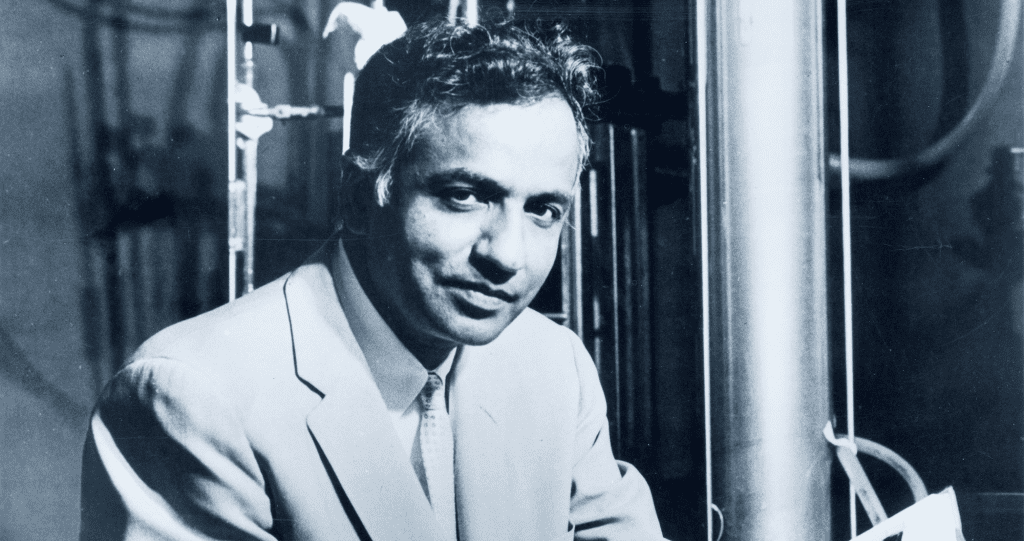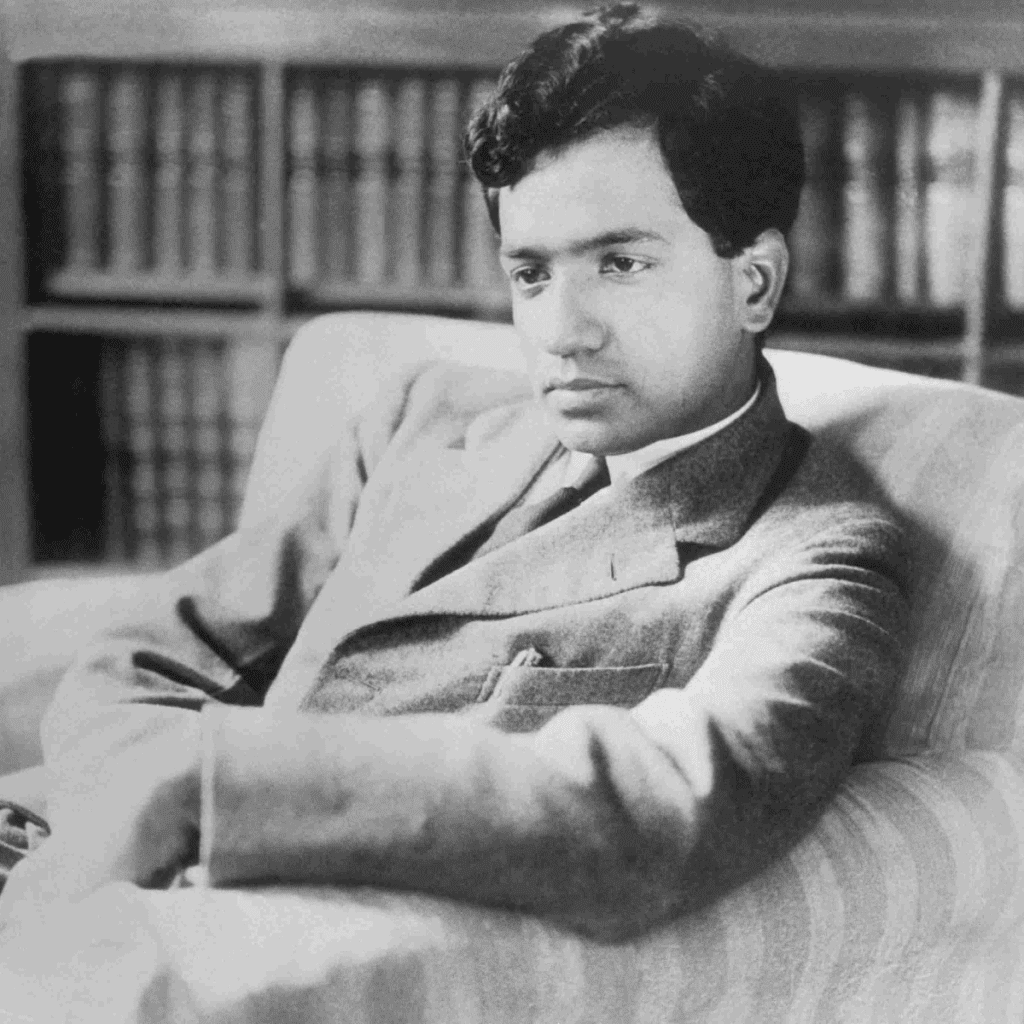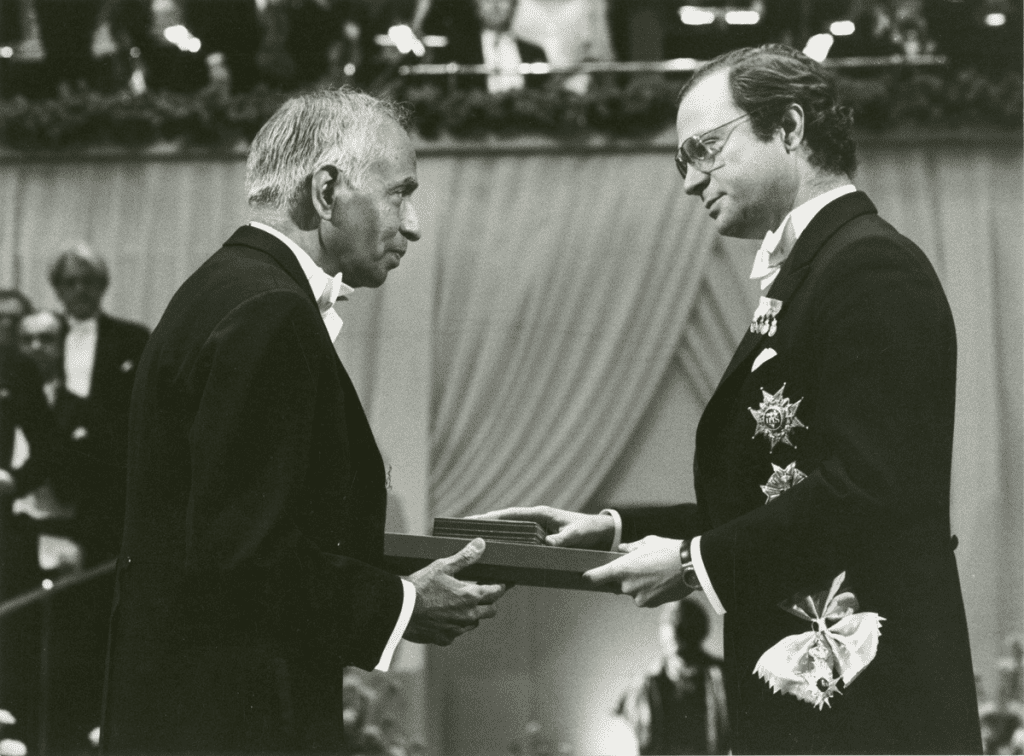Imagine dedicating your life to science, shaping brilliant minds, and watching not one but two of your students win the Nobel Prize before you. Most people might feel overlooked. Maybe even discouraged. But not Subrahmanyan Chandrasekhar.
Instead, he kept working. Kept teaching. Kept chasing questions that the universe wasn’t ready to answer yet. And eventually, the world recognized what his students always knew: Chandra was one of the brightest minds to ever explore the cosmos.

A Young Prodigy Obsessed with the Stars
Born in British India in 1910, Chandrasekhar showed signs of genius early on. By age 19, he had already developed groundbreaking ideas about the life cycle of stars. He proposed that beyond a certain mass limit, stars wouldn’t just fizzle out into white dwarfs they’d collapse into something far more extreme.

This idea now known as the Chandrasekhar limit was met with harsh criticism, even ridicule. The most famous opponent? Sir Arthur Eddington, one of the leading astrophysicists of the time, who publicly dismissed the young man’s theory. For years, Chandra’s ideas sat in the shadows, far ahead of their time.
But he didn’t stop.
Video:
Great Indians: Professor Subrahmanyan Chandrasekh
Teaching Future Geniuses
After moving to the United States, Chandrasekhar joined the University of Chicago, where he taught for decades. He wasn’t the kind of professor who sought attention. He was soft-spoken, meticulous, and deeply dedicated to his students.
And those students? They would go on to change science.
Two of his protégés, Chen-Ning Yang and Tsung-Dao Lee, won the Nobel Prize in Physics in 1957 for their revolutionary work in quantum theory nearly 30 years before Chandrasekhar received his own. And yet, he never showed resentment. He applauded their work, continued to teach, and poured his energy into the pursuit of scientific truth.

The Prize That Finally Came
In 1983, Chandrasekhar was finally awarded the Nobel Prize in Physics for his pioneering work on the structure and evolution of stars specifically, his contributions to the understanding of white dwarfs and the collapse of massive stars.
By then, he had already spent more than half a century making discoveries, mentoring young scientists, and redefining how we understand the universe.
He once said:
“I am not a specialist. I am a wanderer in the realm of ideas.”
That curiosity and his quiet determination had finally received its due recognition.
Video:
1983 Nobel Laureate in Physics, Subramanyan Chandrasekhar
Why His Story Still Matters
Chandrasekhar’s life is a powerful reminder that greatness isn’t always loud. He didn’t seek fame. He didn’t chase prizes. He chased truth. Even when his work was ignored or attacked, he kept moving forward building a legacy one paper, one lecture, one student at a time.
In an age where recognition often comes fast and early, Chandra’s journey reminds us that impact is not always immediate. Sometimes, the most meaningful contributions take decades to be seen and that’s okay.

A Lasting Legacy
Chandrasekhar passed away in 1995, but his influence lives on in the textbooks, theories, and scientists he helped shape. The NASA space observatory Chandra X-ray Observatory, named in his honor, still scans the skies, continuing his life’s work of exploring the stars.
So yes, two of his students won the Nobel before him. But Chandra kept teaching, kept thinking, kept searching. Because for him, science wasn’t about being first it was about being true.
And in the end, he didn’t just teach Nobel laureates.
He became one.


